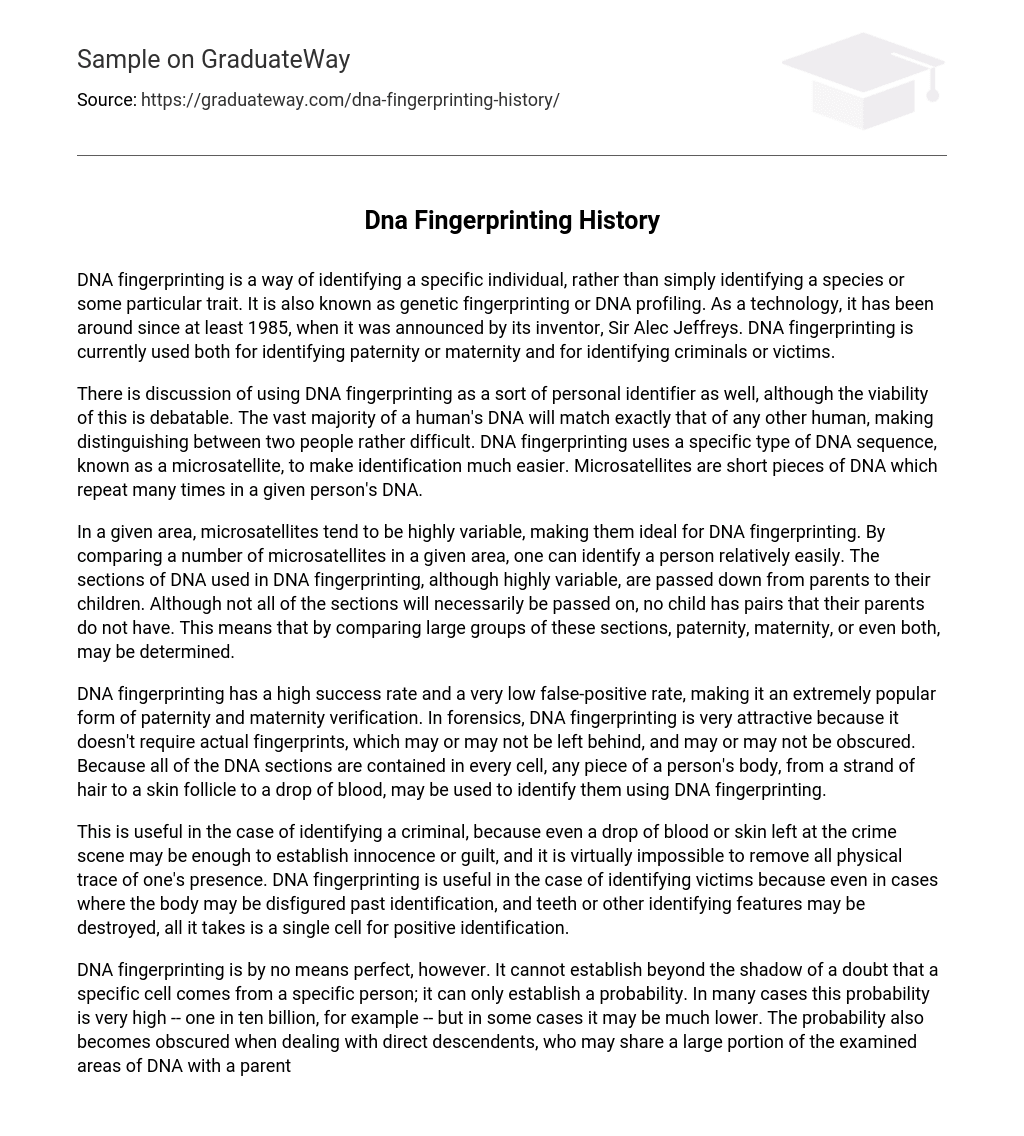DNA fingerprinting is a way of identifying a specific individual, rather than simply identifying a species or some particular trait. It is also known as genetic fingerprinting or DNA profiling. As a technology, it has been around since at least 1985, when it was announced by its inventor, Sir Alec Jeffreys. DNA fingerprinting is currently used both for identifying paternity or maternity and for identifying criminals or victims.
There is discussion of using DNA fingerprinting as a sort of personal identifier as well, although the viability of this is debatable. The vast majority of a human’s DNA will match exactly that of any other human, making distinguishing between two people rather difficult. DNA fingerprinting uses a specific type of DNA sequence, known as a microsatellite, to make identification much easier. Microsatellites are short pieces of DNA which repeat many times in a given person’s DNA.
In a given area, microsatellites tend to be highly variable, making them ideal for DNA fingerprinting. By comparing a number of microsatellites in a given area, one can identify a person relatively easily. The sections of DNA used in DNA fingerprinting, although highly variable, are passed down from parents to their children. Although not all of the sections will necessarily be passed on, no child has pairs that their parents do not have. This means that by comparing large groups of these sections, paternity, maternity, or even both, may be determined.
DNA fingerprinting has a high success rate and a very low false-positive rate, making it an extremely popular form of paternity and maternity verification. In forensics, DNA fingerprinting is very attractive because it doesn’t require actual fingerprints, which may or may not be left behind, and may or may not be obscured. Because all of the DNA sections are contained in every cell, any piece of a person’s body, from a strand of hair to a skin follicle to a drop of blood, may be used to identify them using DNA fingerprinting.
This is useful in the case of identifying a criminal, because even a drop of blood or skin left at the crime scene may be enough to establish innocence or guilt, and it is virtually impossible to remove all physical trace of one’s presence. DNA fingerprinting is useful in the case of identifying victims because even in cases where the body may be disfigured past identification, and teeth or other identifying features may be destroyed, all it takes is a single cell for positive identification.
DNA fingerprinting is by no means perfect, however. It cannot establish beyond the shadow of a doubt that a specific cell comes from a specific person; it can only establish a probability. In many cases this probability is very high — one in ten billion, for example — but in some cases it may be much lower. The probability also becomes obscured when dealing with direct descendents, who may share a large portion of the examined areas of DNA with a parent.





